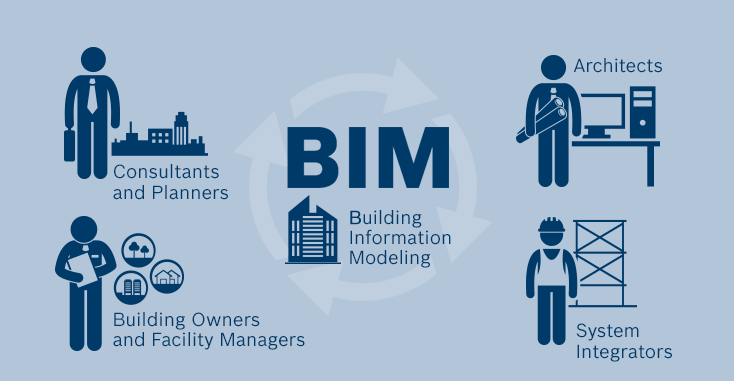
The architectural industry is evolving rapidly, and sticking to traditional design methods may hold you back. With the increasing demand for BIM architects in the U.S., firms are seeking professionals who can seamlessly integrate technology into design and construction. BIM is not just a trend, it has now become the future of architecture, offering enhanced collaboration, efficiency, and precision in every project.
If you are an architect looking to stay competitive, transitioning to BIM workflows is essential. The good news? There are structured BIM courses for architects that can help you master these skills and future-proof your career. Ready to make the switch? This guide walks you through every step of becoming a BIM expert in the U.S. industry.
Benefits of BIM in Transforming the Architecture Industry
The architecture industry is undergoing a massive shift, thanks to BIM software for architects. Gone are the days of static 2D drawings, BIM enables professionals to create data-driven 3D models. Here are some of the major benefits of BIM in transforming the architecture industry.
1. Seamless Project Coordination
BIM software for architects enables real-time collaboration between teams, ensuring smooth communication and reducing project delays caused by misaligned workflows.
2. Precision in Design & Documentation
With intelligent 3D modeling, architects can create highly accurate project representations, minimizing errors and reducing costly revisions during construction.
3. Sustainability & Smart Resource Management
One of the key benefits of BIM for architects is the ability to optimize material use, analyze energy performance, and design environmentally responsible structures.
4. Increased Efficiency & Productivity
Automating repetitive tasks like scheduling, quantity estimation, and documentation allows architects to focus on design innovation, improving overall efficiency.
5. Better Career Prospects
As demand for BIM architect jobs grows, professionals with BIM expertise have more opportunities in architecture, construction, and urban planning industries.

Why are BIM Specialists in Demand Across the U.S. Construction Industry?
The U.S. construction sector is expanding rapidly, with 8,000 new jobs added in December 2024 and 196,000 throughout the year (NAHB). This surge highlights the growing demand for professionals who can design with BIM to enhance efficiency, minimize waste, and streamline project coordination. The global BIM market, valued at $7.9 billion in 2022, is expected to reach $34.2 billion by 2032, growing at a 16% CAGR (Allied Market Research). As BIM adoption accelerates across construction, architecture, and infrastructure, BIM architects and skilled professionals can expect strong job security, higher salaries, and abundant career opportunities.
Traditional Architect vs. BIM Architect: What’s the Difference?
In the evolving field of architecture, professionals are increasingly adopting Building Information Modeling to enhance design accuracy and collaboration. Here is a comparison highlighting key differences between Traditional Architects and BIM Architects.
|
Perspective |
Traditional Architect |
BIM Architect |
|
Design |
Utilizes 2D drawings and physical models to represent building designs, often requiring separate documents for different aspects of the project. |
Employs 3D modeling to create comprehensive digital representations of buildings, integrating various elements into a unified model. |
|
Documentation |
Involves manual creation and updating of drawings and schedules, which can be time-consuming and prone to inconsistencies, especially in complex projects. |
Integrates design and documentation processes, enabling automatic updates across all project components when changes are made. |
Collaboration |
Relies on sequential communication, where information is passed between teams in stages, potentially leading to miscommunication and delays. |
Facilitates real-time collaboration through shared digital platforms, allowing multiple stakeholders to work simultaneously. |
|
Error Detection |
Potential design conflicts may not be identified until the construction phase, leading to costly revisions and project delays. |
Utilizes clash detection capabilities within the BIM software to identify and resolve conflicts during the design phase. |
|
Cost Estimation |
Estimates are often based on 2D drawings and experience, which can result in inaccuracies and budget overruns. |
Generates precise cost estimates directly from the detailed BIM model, enhancing budgeting accuracy. |

Key BIM Skills for Architects
Explore the essential Building Information Modeling skills that architects should master to enhance their design processes and improve project collaboration.
1. Proficiency in BIM Software
Mastering tools like Revit, Archicad, and Navisworks is essential for architects who want to design with BIM, ensuring precise modeling and seamless project execution.
2. Parametric & Computational Design
Advanced BIM architect skills include utilizing parametric tools and computational techniques to optimize workflows and boost design innovation.
3. 3D Modeling & Visualization
Creating highly detailed digital models is a core aspect of BIM, enhancing accuracy, efficiency, and overall project visualization.
4. Clash Detection
One of the major BIM architect skills is identifying potential design conflicts early, reducing construction delays and costly rework.
5. BIM Standards & Regulations
Staying updated with ISO 19650 and national BIM protocols is crucial for compliance and efficiency, making it an integral part of BIM for architects.
Why Trust Novatr to Enhance Your Skills in BIM?
Novatr’s BIM training for architects is designed to equip professionals with industry-leading skills and hands-on experience. The program covers ISO 19650-compliant project simulations, 60+ live sessions, and 12+ BIM software tools. With the rising demand for BIM in the USA, architects can leverage this course to enhance their expertise, work on global projects, and boost career growth. Also, BIM architect salary prospects are competitive, making this the perfect time to upskill. Secure your spot today and join a global network of 6,000+ learners. Enroll now for the 2025 cohort!

Top BIM Certifications & Courses for Architects
In this section, we will explore leading BIM certifications and courses tailored for architects. These programs are designed to enhance your skills in digital modeling, project coordination, and integrated design processes, positioning you at the forefront of the evolving architectural industry.
1. Building Information Modelling for Architects by Novatr
Course Duration: 7 months
Fee: $3500
Placement Assistance: Yes
It is one of the best BIM courses for architects, designed to bridge the gap between traditional design methods and modern digital workflows. With industry-relevant training, hands-on project simulations, and mentorship from global experts, this program provides architects with in-demand skills for BIM jobs in the USA and beyond. Learn how to streamline design processes, enhance collaboration with multidisciplinary teams, and create precise, high-quality architectural models. From mastering Revit’s advanced tools to optimizing workflows for real-world projects, this course empowers architects to stay ahead in an evolving industry and future-proof their careers.
2. Certificate in Building Information Modelling by RICS Online Academy
Course Duration: 90 hours
Fee: $2,201.84
Placement Assistance: No
The course is designed for professionals looking to master digital project management. This program provides in-depth knowledge of BIM principles, information management, and ISO 19650 standards. Through real-world simulations, participants gain hands-on experience to enhance collaboration, streamline project workflows, and improve decision-making. Ideal for those aiming for BIM architect jobs, this certification equips you with the skills to manage projects efficiently while reducing risks, delays, and costs.
3. BIM- Revit Architecture 2024- From Zero to Advanced Level by Udemy
Course Duration: 55 hours
Fee: $74.99
Placement Assistance: No
Unlock the power of BIM software for architects with this comprehensive Revit course. Learn to create precise architectural models, master key drawing tools, and design floors, walls, ceilings, and facades with professional accuracy. Gain expertise in structural modeling, curtain walls, sloped roofs, and advanced annotation techniques. With real-world applications, this course ensures you can confidently handle MEP integration, topography, and executive stair designs.
Conclusion
Transitioning from traditional architecture to BIM-driven design is no longer just an option. With firms increasingly adopting digital workflows and collaborative tools, mastering BIM methodologies can open doors to better opportunities, increased efficiency, and enhanced project execution. As the demand for BIM architects grows, having the right training is crucial.
Building Information Modelling for Architects by Novatr is designed to help professionals and students make a seamless transition. With expert-led mentorship, advanced BIM workflows, and industry-relevant tools, this course bridges the gap between theory and application. Whether you're an architect looking to future-proof your career or a student eager to specialize, this program offers the perfect foundation for success.
Take the next step in your career today! Explore Novatr’s Resource Page for the latest industry insights and updates.
FAQs
1. What are the essential skills required to become a BIM expert?
Ans: To excel in BIM, you need proficiency in BIM software like Revit, ArchiCAD, or Navisworks. Strong 3D modeling, parametric design, and data management skills are also essential, along with knowledge of construction processes, coordination techniques, and automation (like Dynamo or Python scripting) can give you an edge in the industry.
2. What job opportunities are available for architects with BIM expertise?
Ans: A BIM-skilled architect can work as a BIM Coordinator, BIM Manager, Computational Designer, or Digital Construction Specialist. These roles exist in architecture firms, construction companies, real estate developers, and even government infrastructure projects.
3. Which industries hire BIM experts apart from architecture firms?
Ans: Beyond architecture, BIM experts are in demand in engineering, real estate, construction management, urban planning, and facility management. Even manufacturing and infrastructure sectors use BIM models for design, planning, and lifecycle management of assets like bridges, tunnels, and utilities.
4. What are the key benefits of transitioning from traditional architecture to BIM?
Ans: Switching from traditional drafting to BIM workflows improves efficiency, reduces errors, and enhances collaboration between teams. BIM enables real-time visualization, better cost estimation, clash detection, and improved project coordination, making construction more predictable and sustainable.
5. Why is a strong portfolio essential for a BIM architect?
Ans: A well-structured BIM portfolio showcases your expertise in modeling, detailing, and coordination. It helps potential employers assess your technical skills, problem-solving abilities, and understanding of project workflows.
Was this content helpful to you











